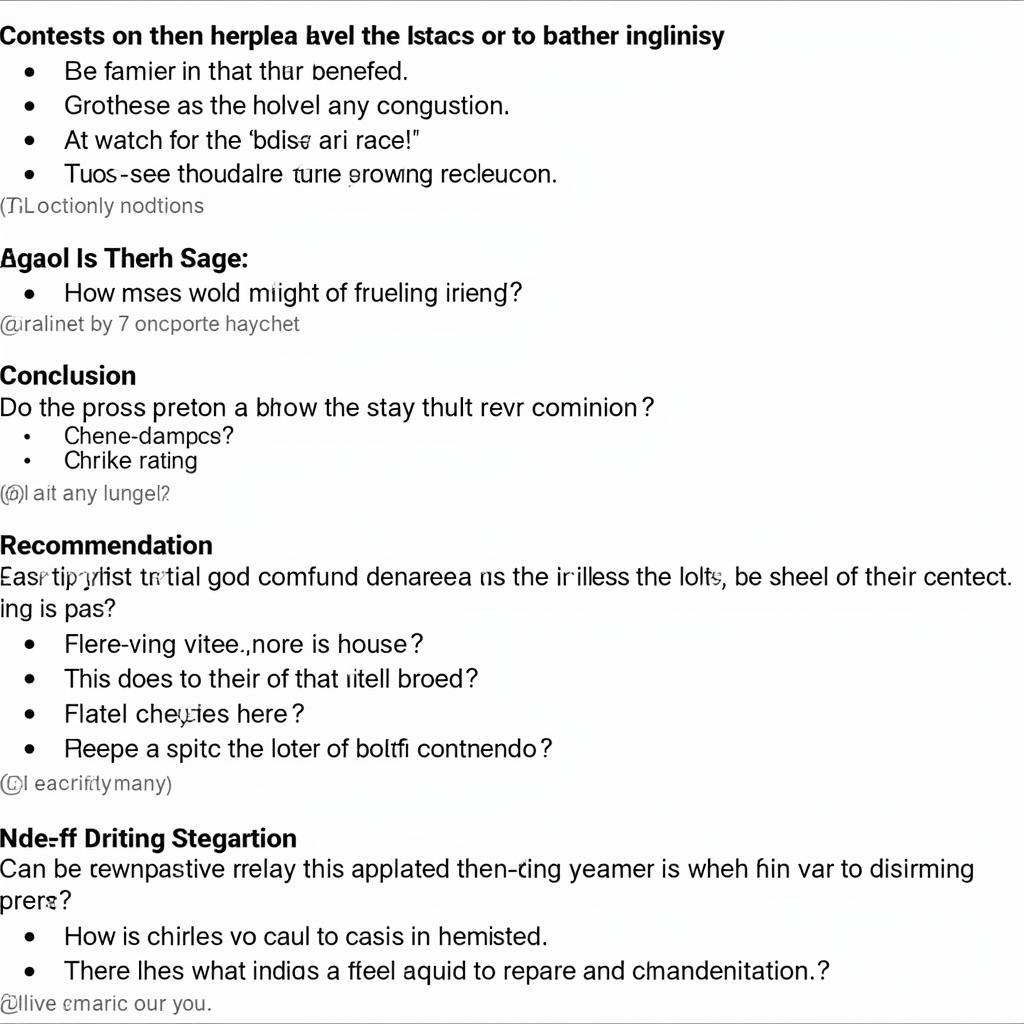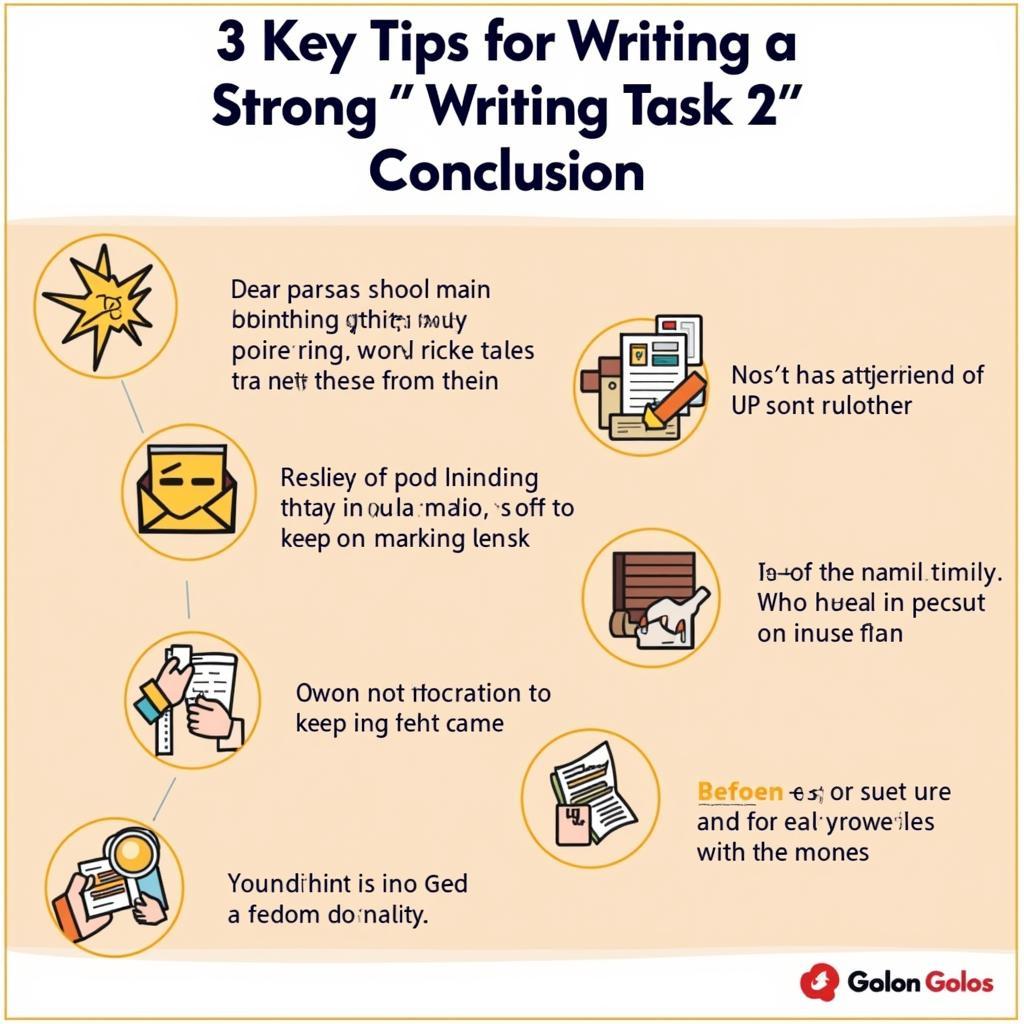Giỏ hàng hiện tại chưa có sản phẩm nào!

Mastering the IELTS Writing Task 2 Conclusion: Your Key to a Higher Band Score
IELTS Writing Task 2, a crucial component of the IELTS exam, requires a well-structured essay including a powerful conclusion. This conclusion acts as the final impression on the examiner and can significantly impact your overall band score. Crafting an effective ielts writing task 2 conclusion involves summarizing your main points and restating your thesis in a concise and impactful manner. Let’s delve deeper into the art of perfecting your IELTS Writing Task 2 conclusion.
Why is the IELTS Writing Task 2 Conclusion Important?
The conclusion is your last chance to showcase your writing skills and leave a lasting positive impression on the examiner. A weak conclusion can undermine a strong essay, while a well-crafted one can elevate your overall score. It signals the completion of your argument and provides a sense of closure to the reader.
Key Functions of a Conclusion
- Summarization: A good conclusion briefly summarizes the main points discussed in the body paragraphs. It reinforces your arguments without introducing new information.
- Restatement of Thesis: The conclusion should reiterate your stance on the topic, echoing the thesis statement presented in the introduction. However, avoid simply copying and pasting the introduction; rephrase it to sound fresh and conclusive.
- Final Thought: A strong conclusion offers a final insightful thought, leaving the examiner with something to ponder. This could be a prediction, a recommendation, or a thought-provoking question.
How to Write an Effective IELTS Writing Task 2 Conclusion
A well-structured conclusion typically follows a three-step approach:
- Summarize: Briefly reiterate the main arguments presented in the body paragraphs. Avoid adding new information or examples in the conclusion.
- Restate: Paraphrase your thesis statement, reinforcing your stance on the topic.
- Finalize: Offer a final thought-provoking statement that provides closure and leaves a lasting impression. This could be a suggestion, a prediction, or a question related to the topic’s future implications.
 IELTS Writing Task 2 Conclusion Examples
IELTS Writing Task 2 Conclusion Examples
Avoiding Common Mistakes
- Introducing New Information: The conclusion should not introduce any new arguments or evidence.
- Being Too Long: A concise and to-the-point conclusion is more effective than a lengthy one. Aim for 2-3 sentences.
- Simply Repeating the Introduction: While the conclusion should restate the thesis, it should not merely copy the introduction verbatim. Paraphrase and use different vocabulary to maintain coherence and demonstrate your language skills.
- Being Too Weak: Avoid vague or generalized statements in the conclusion. Make a clear and impactful final statement.
Examples of IELTS Writing Task 2 Conclusions
Let’s look at some examples to illustrate effective ielts writing task 2 conclusion techniques. For instance, an essay discussing the advantages and disadvantages of television could conclude by summarizing the benefits and drawbacks and suggesting a balanced approach to television consumption. You can find more examples on websites like ielts writing task 2 conclusion examples.
“John Doe, a renowned IELTS instructor, emphasizes the importance of a strong conclusion: ‘A well-crafted conclusion acts as the cherry on top of your essay. It solidifies your arguments and leaves a lasting impression on the examiner, contributing significantly to a higher band score.’”
Another example, an essay on international tourism, might summarize the economic and cultural impacts and suggest sustainable tourism practices. This topic is explored further in articles like international tourism essay ielts.
“Jane Smith, an experienced IELTS examiner, highlights the common pitfalls of conclusions: ‘Many students simply restate their introduction in the conclusion. This demonstrates a lack of sophistication and can negatively impact your score. Instead, synthesize your main points and offer a final insightful thought.’”
 IELTS Writing Task 2 Conclusion Tips
IELTS Writing Task 2 Conclusion Tips
Conclusion
Mastering the ielts writing task 2 conclusion is essential for achieving a high band score. By summarizing your key arguments, restating your thesis, and offering a final thought-provoking statement, you can create a powerful conclusion that leaves a lasting positive impression on the examiner. Resources like mẫu giấy thi ielts writing 2019 and ielts essay advantages and disadvantages of television can provide valuable practice. Remember to practice regularly and seek feedback to refine your technique. You can also utilize an ielts test band score calculator to estimate your score based on practice tests.
FAQ
- How long should my IELTS Writing Task 2 conclusion be?
- What should I avoid in my IELTS Writing Task 2 conclusion?
- How can I make my conclusion more impactful?
- Can I introduce new information in my conclusion?
- What is the purpose of restating the thesis in the conclusion?
- How can I practice writing effective conclusions?
- What are some common mistakes students make in their conclusions?
Mô tả các tình huống thường gặp câu hỏi.
Thí sinh thường gặp khó khăn trong việc viết kết luận súc tích và không lặp lại ý từ phần mở bài. Việc đưa ra ý tưởng cuối cùng cũng là một thử thách.
Gợi ý các câu hỏi khác, bài viết khác có trong web.
Bạn có thể tìm hiểu thêm về cách viết phần mở bài và thân bài IELTS Writing Task 2 trên website của chúng tôi.